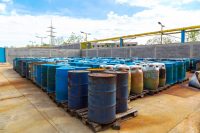Six Tips When Shopping for a TSDF
Hazardous waste treatment, storage, and disposal facilities (TSDFs) are required to not only obtain but also maintain their operating permits. Generators of hazardous waste are required to ensure that their hazardous waste is sent to a reputable TSDF. So, it is critical that generators know whether the permit at the TSDF they use is up […]










